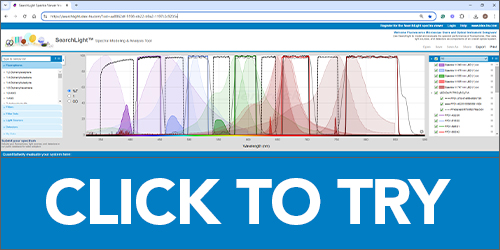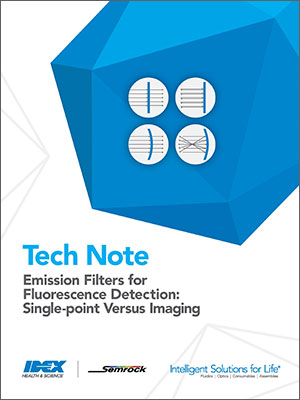Edge Blackening

Enhanced Product Filtering
Optical filters can be searched by individual filters and by set. You will also still have access to the e-store left navigation filtering that you are used to from the historic semrock.com to search by wavelength, filter families, fluorophore, filter type, light source, laser wavelength, edge steepness, flatness, application, and more.
If you are a North American laboratory, university, or government agency, please consider placing your order directly with our distribution partner, AVR Optics. Visit AVR Optics
Individual Filters
Select your bandpass, edge filters, dichroics, and more by key fluorophores.
Optical Filter Sets
Explore single-band and multi-band sets for popular applications and wavelengths.
Shop by Fluorophore
Looking for a filter set to go with your fluorophore? Use the chart on this page to find which Semrock optical filter sets are compatible with popular fluorophores.
Discontinued Semrock Optical Filter Products
Our products are regularly revised to improve performance. Find replacement products here.
SearchLight
Select the elements of your fluorescence system and quickly calculate a relative signal brightness, autofluorescence level, and signal to noise ratio.
Optical System Design
Partner with our optical design and engineering experts to build a fully integrated system for your instrument.
Illumination Solutions
Explore a wide range of laser and LED illumination light engines to meet your application needs from Next Generation Sequencing, Cytometry, Fluorescence Microscopy, and Spectroscopy in clinical and research environments.
Custom Microscope Objective
Partner with our optical design and engineering experts to build a custom objective solution optimized for high-NA, wide field of view, and diffraction-limited resolution performance.
Column Hardware
Explore our extensive line of HPLC and UHPLC column hardware optimized to enable selectivity, efficiency, and high-quality separation performance in your flow paths.
Degassers
Explore our broad portfolio of vacuum degassing assemblies to control bubbles in a wide range of system-fluids and flow-rates.
Fluidic Connections
Explore our comprehensive line of tubing, connectors, fittings, and flow control devices that meet the increasingly demanding requirements of today’s high performance analytical fluidic systems.
Pumps
Explore our long-life precision dispense pumps designed for use in a range of clinical and laboratory instruments.
Sensors
Accurately monitor and control your pressure to achieve accurate instrument output and maximized system capabilities with our sensors.
RI Detectors
Achieve high resolution and low dispersion detection with our RI detectors for HPLC applications.
Valves
Explore manual valves for lower frequency use, rotary shear valves that meet the high duty cycle requirements of UHPLC, and more
Fluidic Subsystems
Challenged with minimizing expensive reagent volumes while maintaining a cost effective, reliable platform? Partner with our fluidic design and engineering experts to manufacture subsystem solutions to mitigate risk to performance and minimize cost.
Custom Fluidic Solutions
Enhancing reliability, preventing leakage, minimizing carryover, and enhancing usability. These are a few of the many advantages in partnering with us for custom fluidic solutions.
New Optical Filter Resources
News
Life Science Optics
Our IDEX Health & Science Center of Excellence in Rochester, New York is the home to our Life Science Optics division. Take a tour of our world class optical coating facility, with scaled-up sub-system manufacturing and expanded optical sub-system design capabilities.
Optical Filters Videos
Below you will find educational webinars about choosing the best optical filter for your application, as well as, tutorials on how to you SearchLight, how to clean optical filters, and more.









Leave a commentOrder by
Newest on top Oldest on top